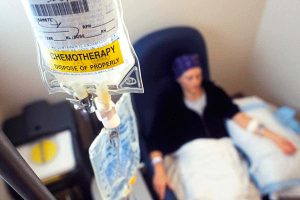Table of Contents
Chemotherapy is a treatment method that uses powerful chemicals to combat diseases like cancer. Its primary goal is to eliminate cancer cells that rapidly multiply and spread throughout the body. The medication can be administered orally, injected, or applied topically, depending on the type and location of cancer being treated. Chemotherapy plays a vital role in managing cancer and improving patient outcomes.
Purpose of Chemotherapy

Chemotherapy is specifically designed for patients diagnosed with cancer. It is a versatile treatment with multiple purposes depending on the patient’s condition and the type of cancer. Here are the key objectives of chemotherapy:
- Control the spread of cancer cells. Chemotherapy slows or halts the multiplication of cancer cells, preventing them from spreading to other parts of the body.
- Reduce tumor size. It may shrink tumors, making other treatments like surgery or radiotherapy more effective.
- Alleviate symptoms. Chemotherapy can help manage pain and discomfort caused by cancer, improving the patient’s quality of life.
By addressing these objectives, chemotherapy serves as an essential tool in cancer management and care.
Chemotherapy Process Step by Step
The chemotherapy process can vary significantly depending on the patient’s specific case, but the general steps include:
- Consultation and Planning. The oncologist assesses the patient’s condition and develops a personalized treatment plan, including the type of chemotherapy drugs and the schedule of sessions.
- Administration. The chemotherapy drugs are administered via injection, intravenous infusion, oral medication, or topical application, as prescribed.
- Monitoring. Throughout the session, the patient’s vital signs and reactions are closely observed to ensure safety and manage any immediate side effects.
- Rest Periods. Chemotherapy is often given in cycles, allowing time for the body to recover between sessions. For instance, a patient might undergo treatment for one week followed by a rest period of three to four weeks.
Each session is tailored to the patient’s needs, with adjustments made as necessary to ensure the most effective and safe treatment experience.
Chemotherapy Results
Chemotherapy delivers various outcomes depending on its purpose and the type of cancer being treated. Below are the results that patients and doctors can expect:
- Reduction in cancer size. Chemotherapy often shrinks tumors, making them easier to remove surgically or manage with other treatments.
- Slowing cancer progression. It can halt or slow the spread of cancer to other parts of the body, improving overall prognosis.
- Symptom relief. In advanced cases, chemotherapy can reduce symptoms like pain, improving the patient’s comfort and quality of life.
While chemotherapy may not guarantee a cure, it plays a critical role in managing cancer and extending life expectancy for many patients.
Prognosis After Chemotherapy

The prognosis for patients undergoing chemotherapy varies depending on factors such as the type and stage of cancer, the patient’s overall health, and how their body responds to the treatment. Many patients experience significant improvements, including reduced tumor size and slower cancer progression. When combined with other treatments like surgery or radiotherapy, chemotherapy can enhance survival rates and improve quality of life. However, a successful outcome often requires strict adherence to the treatment plan and lifestyle adjustments, such as maintaining a nutritious diet and following the doctor’s recommendations.
Risks of Chemotherapy
Despite its effectiveness, chemotherapy comes with several risks and side effects due to its impact on both cancerous and healthy cells. Common risks include:
- Fatigue. Patients often experience extreme tiredness that may require rest and assistance with daily activities.
- Nausea and vomiting. These symptoms are among the most frequently reported side effects of chemotherapy.
- Hair loss. Hair may thin or fall out entirely during treatment, though it often grows back after chemotherapy ends.
- Increased infection risk. The treatment can weaken the immune system, making patients more vulnerable to infections.
- Anemia. A decrease in red blood cells may lead to fatigue and shortness of breath.
- Digestive issues. Patients may experience diarrhea or constipation as a result of treatment.
- Skin and nail changes. Skin may become dry or itchy, and nails may crack or become brittle.
While these side effects can be challenging, many are manageable with proper care and guidance from healthcare providers. Patients are encouraged to communicate any side effects to their medical team to address concerns promptly.
FAQs About Chemotherapy
Patients undergoing chemotherapy often have many questions about the treatment. Below are the answers to some of the most commonly asked questions:
- What is chemotherapy? Chemotherapy is a treatment that uses powerful chemicals to kill or slow the growth of cancer cells. It can be administered through oral medication, injections, or intravenous infusion.
- Who needs chemotherapy? Chemotherapy is recommended for patients diagnosed with cancer. It can be used to control the spread of cancer, reduce tumor size, or relieve symptoms caused by the disease.
- How often is chemotherapy performed? The frequency of chemotherapy sessions depends on the patient’s treatment plan. It can range from once a month to a cycle of treatment followed by rest periods, such as one week of treatment and four weeks of rest.
- What should I do to prepare for chemotherapy? Patients should discuss potential side effects with their doctor, arrange for assistance during treatment, and take steps to boost their immune system, such as eating healthily and avoiding sources of infection.
- What are the side effects of chemotherapy? Common side effects include fatigue, nausea, hair loss, increased risk of infections, anemia, digestive issues, and skin or nail changes. Side effects can vary from patient to patient.
- Does chemotherapy cure cancer? Chemotherapy does not guarantee a cure but is highly effective in managing cancer by reducing tumor size, slowing disease progression, and alleviating symptoms.
- Can I work or go to school during chemotherapy? Many patients can continue working or attending school, but this depends on how their body responds to treatment. Flexible schedules and understanding employers or educators are essential.
- How much does chemotherapy cost in the Philippines? The cost varies widely depending on the drugs used, with sessions ranging from ₱40,000 to hundreds of thousands of pesos. PhilHealth offers assistance, so patients are encouraged to explore coverage options.
- How do I take care of myself after chemotherapy? After treatment, patients should focus on rest, eating a balanced diet, avoiding infections, and attending follow-up appointments to monitor their recovery and side effects.
- Is chemotherapy covered by PhilHealth? Yes, chemotherapy is covered under PhilHealth benefits, which can help reduce treatment costs. Patients should consult their healthcare provider for assistance in claiming these benefits.


